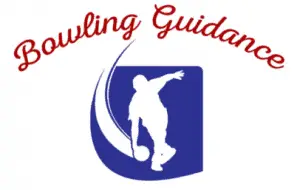
I know you have a lot of questions regarding some of the Kegel Navigation Series Patterns. The Kegel Boardwalk is one of the popular oil patterns, yet there isn’t enough discussion on the internet about how and where you play this particular pattern, what balls to use to get the best results, and what are the strategies. Today I will talk about the Boardwalk oil pattern in-depth and try to highlight every piece of information I possibly can so that playing on this pattern gets easier for you. So, learn how to hit the Boardwalk, shall we?
What is Kegel Boardwalk oil pattern?
The Kegel Boardwalk pattern has a distance of 35 feet. Due to its relatively short length and flatter ratio bowlers often feel the need to control the excessive change of direction of their bowling balls. Interestingly, the Kegel Boardwalk has three official versions. Do take a look at the pattern sheet before you go play in a tournament. Don’t worry your playing tactics won’t vary much.
First, the Kegel Boardwalk (2435)— that has two subcategories. One with 40 uL of oil per board and another with 50 uL of oil per board, while both runs 35 feet in length. The Total Volume Oil of the Boardwalk (40 uL) is 24.08 mL (Forward Oil Total is 10.68 mL and Reverse Oil Total is 13.4 mL). The oil ratio is 2.04:1 which is pretty flat.
Then comes the Boardwalk 50 uL version where there will be 50 uL of oil on each board. The Total Volume Oil of this official version is 23.9 mL (Forward Oil Total is 10.55 mL and Reverse Oil Total is 13.35 mL). The oil ratio is 2.11:1, so, yes, pretty flat it is. This 50 uL version is most commonly used in most tournaments and houses.
The Kegel Boardwalk V2 (2135), has a Total of 28.25 mL Volume Oil, (Forward Oil Total is 14.9 mL and Reverse Oil Total is 13.35 mL). The oil ratio on the V2 version of Boardwalk is 2.16:1, again, quite flat. Now, let’s go ahead and have an idea of how to hit on this pattern so that you can play flawlessly.
How to attack on Boardwalk oil pattern?
To start with brilliance on the Boardwalk oil pattern, you should first do some calculations using the ‘Rule of 31’. So, Pattern Length – 31, 35-31 = 4 which is indicating where you want your ball at the end of the pattern. So for this pattern, your ball’s expected exit point should be on board 4. As we all know, most short patterns play out and this one is no exception.
One of the key things to look for when you bowl on this pattern is when you do get outside of 5 board, make sure that you slide far enough to the right. Normally there’s about 7 boards difference between where you slide and where you lay the ball down. So if you’re going to play straight up, let’s say the 4 board, you would want to slide somewhere around 11-12 board.
Typically, on a shorter pattern, players that hit short consistently are the players that throw a little harder, straighter, and can stay out a little bit longer and move inside much later. Another thing to look for when you’re playing the Boardwalk oil pattern is to check what are the first two boards like. Are they on the desertion friction? Can you get your ball to the edge and then get it back? If any of these is your case, you’re gonna move your focal point a bit further to the right and play the gutter. If the lane seems a bit too tough, then you should move your focal point in a little bit inside and keep your angles tighter. In this case, a ball that rolls and doesn’t make a big move is great as you can use your playing angle to hit the pocket.
If you take a look at the pattern sheet, the Boardwalk oil pattern uses a pretty high concentration of oil in the front part of the lane, and then a lesser concentration of oil in the midlane, and after that you will see 25 feet of dry (buffed out) backends. Therefore, a strong blending oil on the lane is established to offer bowlers various angles to play based on their individual ball delivery techniques.
The Kegel Boardwalk oil pattern will generally require a more direct route to the pocket. However, on some lanes (based on its characteristics) you will probably have the opportunity to swing your ball to the edge board. Clearly, if played right, this Kegel pattern can provide a strong entry angle to the pocket, high scores, and great excitement. But, hey, be careful to not stray too far off the Boardwalk. Otherwise, you will find yourself in the moat!
Which bowling ball is best for this pattern?
You’re going to need a bowling ball with enough simply because the friction differential is in the front part of the lane and you want the ball to read the fronts. If you go for a shiny ball make sure the finish isn’t more than 1500 Grit. A good bowling ball to start with would be the Radical Yeti Unleashed or Radical Double Cross.
You want something moderately strong so it doesn’t get weak at the backends and hit the pins with enough force to ensure a strike. For that a nice ball would be any of these bowling balls— Roto Grip Rubicon UC3, Hammer Blue Hammer, Columbia 300 Burst, Motiv Purple Tank, Brunswick U-Motion, Columbia 300 Full Throttle, Storm IQ Tour Solid, etc.
When the pattern begins to break down and you decide to change the ball, go ahead and use something like the Radical Payback, Storm Tropical Breeze, Radical Grease Monkey, Storm Axiom, or Roto Grip Hyper Cell.
Conclusion
Before I wrap up, remember the basics, start from the outside and then gradually move inside as the lane transitions— this is your best option to win the Kegel Boardwalk oil pattern. Don’t be afraid to use a slightly stronger ball. As long as they are controllable you’re good to go. Don’t be too worried. You got it! Now, what you should do is practice, practice, and practice, till you’re satisfied with your performance on this pattern. So, good luck and see you later!

